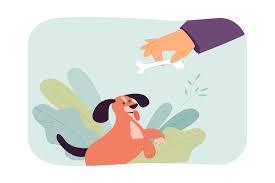Feeding animals, whether pets, livestock, or wildlife, is a crucial responsibility that requires careful consideration to ensure their health and well-being. Proper nutrition, feeding schedules, and understanding specific dietary needs are essential for maintaining the vitality of animals. Here are some best practices for feeding animals:
1. Understand Nutritional Needs
Different animals have unique dietary requirements. For instance, cats are obligate carnivores, needing a diet high in meat, while dogs are omnivores and can eat a more varied diet. Livestock such as cows and sheep require a diet rich in fiber, while poultry need grains and protein. Researching and understanding these needs ensures that animals receive the appropriate nutrients.
2. Provide Balanced Diets
A balanced diet is crucial for the health of all animals. Commercially prepared feeds are often formulated to meet the dietary needs of pets and livestock. However, homemade diets can also be effective if properly planned. Including a variety of nutrients such as proteins, fats, carbohydrates, vitamins, and minerals helps prevent deficiencies and promotes overall health.
3. Fresh and Clean Water
Access to clean, fresh water is as important as food. Water supports digestion, nutrient absorption, and overall metabolic processes. Ensure that water sources are clean and changed regularly to prevent contamination and the spread of disease.
4. Regular Feeding Schedules
Establishing regular feeding schedules helps maintain the digestive health of animals and prevents overeating or underfeeding. Consistent feeding times also create a routine, which can reduce stress and anxiety in animals, particularly pets.
5. Avoid Overfeeding and Underfeeding
Both overfeeding and underfeeding can lead to health problems. Overfeeding can cause obesity, which leads to issues such as diabetes, heart disease, and joint problems. Underfeeding, on the other hand, can result in malnutrition, weakened immune systems, and stunted growth. Monitoring portions and adjusting as necessary based on the animal’s age, size, and activity level is essential.
6. Consider Special Dietary Needs
Some animals have specific dietary requirements due to health conditions, age, or breed. For example, older pets might need diets lower in calories but higher in certain nutrients like omega-3 fatty acids. Animals with allergies may require hypoallergenic diets. Consulting with a veterinarian or animal nutritionist can provide guidance on these specialized needs.
7. Avoid Harmful Foods
Certain foods can be toxic to animals. For example, chocolate, grapes, and onions are harmful to dogs, while cats should avoid consuming garlic, alcohol, and caffeine. Being aware of these dangerous foods and keeping them out of reach is vital for animal safety.
8. Enrichment Feeding
For many animals, feeding can be an opportunity for mental stimulation. Using puzzle feeders or hiding food around an enclosure encourages natural foraging behaviors and can prevent boredom, especially in pets and zoo animals.
Conclusion
Feeding animals responsibly involves understanding their specific dietary needs, providing balanced nutrition, ensuring access to clean water, and avoiding harmful foods. By following these best practices, caregivers can promote the health, happiness, and longevity of the animals in their care.

